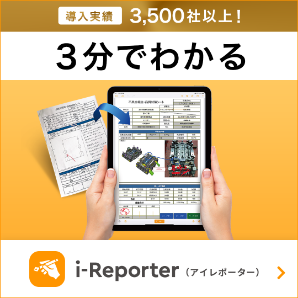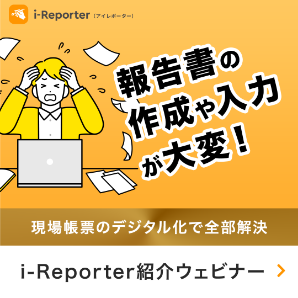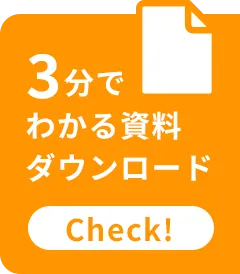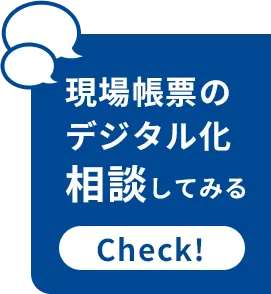What is calibration of measuring instruments? Explaining how and when to perform it, and its relationship with ISO 9001
Measuring instruments are essential in manufacturing and research and development, as they affect the accuracy of products and test results. However, no matter how high-performance a measuring instrument is, errors can gradually occur over time and with use. Calibration is performed to detect errors and maintain proper operation. Calibration is an important task from the perspective of ensuring product quality, improving reliability, and complying with international standards. This article provides an easy-to-understand explanation of the background to the need for measuring instrument calibration, how it is performed, and its relationship to ISO9001.
table of contents
What is instrument calibration?
Calibration of measuring instruments is the process of checking whether the measuring instruments and equipment being used are showing accurate values. Calibration is performed through comparative measurements with a high-precision standard measuring instrument, and corrections and adjustments are made after checking for any errors. This series of calibration procedures ensures the accuracy and reliability of measurement results.
Why is instrument calibration necessary?
Calibration is essential for quality control and ensuring the reliability of test results. Errors in measuring instruments gradually accumulate due to aging, component wear, and changes in the measurement environment such as temperature and humidity.
If such errors are left unchecked, they can increase the uncertainty of measurements, leading to product defects and safety risks, and can have a negative impact on the company's credibility and product reputation.
When to calibrate your measuring instruments
While "specified measuring instruments" as defined by the Measurement Act are required to undergo periodic inspections, there are no clear legally established inspection intervals for other general measuring instruments, and it is common for them to be inspected at intervals recommended by the manufacturer.
For example, many manufacturers recommend a calibration interval of "every year." However, depending on the frequency of use, environment, and required measurement accuracy, calibration may be required at shorter intervals, so it is necessary to set an appropriate calibration interval.
Quality management systems such as ISO 9001 explicitly require the regular calibration of measuring instruments and the assurance of traceability. Traceability refers to the ability to trace the standards against which a measuring instrument was calibrated, and is an element that is directly linked to product reliability and audit compliance.
[Example of when to calibrate measuring instruments]
・Regularly (approximately once every six months to a year)
- When performing maintenance on the measuring instrument
・Before and after use
・When deterioration due to aging is suspected
- If there are any abnormalities or problems with the measurement values
- When the measurement environment changes significantly
Relationship between calibration of measuring instruments and ISO9001
The quality management standard ISO9001 stipulates "management of monitoring and measuring equipment" as one of its requirements. This includes the calibration of measuring instruments, and companies must establish specific management methods.
The main control standards for the calibration of measuring equipment are as follows:
・Calibration at specified intervals or before use
Measuring instruments must be calibrated at regular intervals or before use. Regular calibration helps maintain the accuracy and reliability of measurements and reduces uncertainty.
- Use of measurement standards that are traceable to international or national measurement standards
The standard instruments used for calibration must have traceability to international standards such as IEC or national measurement standards. Maintaining consistency with the standards guarantees the reliability of the calibration results.
・Maintaining calibration records
Records such as calibration certificates, performance reports, and traceability system diagrams must be properly stored in preparation for quality audits, customer inquiries, and investigations into the cause of product defects.
By systematically carrying out calibration work for measuring equipment and maintaining records, it is possible to build a quality control system that meets the requirements of ISO 9001. Calibration management is the foundation that supports the reliability of products and services.
How to perform instrument calibration
Measuring instrument calibration can be broadly divided into in-house calibration and outsourcing. Both methods have their own characteristics, and the appropriate method must be selected based on the implementation environment, required accuracy, and in-house resource situation. Let's take a look at each method and their advantages and disadvantages.
Calibrate your measuring instruments in-house
When performing calibration in-house, first prepare a high-precision standard (reference) and compare it with the measuring instrument to measure the error. A temperature-controlled room with stable temperature and humidity is ideal for the work environment, and it is also essential to have calibration procedures and records in place. It is necessary for personnel to receive sufficient education and training, and to establish a system that enables calibration work to be carried out correctly.
・Benefits of calibrating measuring instruments in-house
In-house calibration of measuring instruments reduces costs by eliminating the need to outsource the work, and also minimizes the risk of damage and downtime during transport by eliminating the need to transport the equipment outside the facility.
Another benefit is that it can be flexibly adapted to fit your company's business schedule, allowing you to carry out calibration work at a time that suits the situation on site.
・Disadvantages of calibrating measuring instruments in-house
To perform calibration in-house, it is necessary to prepare high-precision standards, temperature-controlled rooms, and other equipment. Employees in charge of calibration work must undergo prior education and practical training, and procedures and management systems must also be created.
Furthermore, traceability and the reliability of third-party certification may be deemed insufficient compared to external calibration organizations, which could put you at a disadvantage in terms of evaluation. In quality management-related examinations and audits, there is a risk that deficiencies in such systems may be pointed out, so it is necessary to establish record-keeping and management methods.
Outsource
When outsourcing the calibration of measuring instruments, it is common to request the manufacturer or a JCSS-certified calibration specialist. If a calibration certificate or report is issued, traceability is ensured.
・Advantages of outsourcing the calibration of measuring instruments
Outsourcing calibration to an external company will provide you with a calibration certificate and report, making it easier to respond to audits and customer requests. In addition, the work will be carried out by a specialist company with advanced technology and equipment, which will increase the measurement accuracy and reliability of the work.
Another major benefit is that there is no need to set up an in-house proofreading system, reducing the resources required for training and operation.
・Disadvantages of outsourcing the calibration of measuring instruments
If you outsource the work, you will incur a fee for each calibration, and you may not be able to use the measuring equipment during the calibration period, which could disrupt your business.
Additionally, the logistics and management of shipping and returning equipment requires time and effort.
Frequently asked questions about instrument calibration
Calibrating measuring instruments requires specialized knowledge and judgment. Knowing the likely questions you may have beforehand will help you respond smoothly.
Why are calibration certificates and reports necessary?
Calibration certificates and reports are essential for externally proving the accuracy and reliability of measurement values and ensuring traceability. They contain information that shows that the calibration performed is traceable to international and national standards, making it easier to respond to audits or requests for submission from business partners.
When you request calibration from a calibration service provider, documents such as a calibration certificate, calibration report, and traceability system diagram are generally issued.
Where should I get my measuring instruments calibrated?
The calibration method for precision instruments such as measuring instruments and testing equipment varies depending on the purpose of use and the required accuracy. If traceability or high measurement accuracy is required, it is common to outsource the work to a company that specializes in calibration services, such as JCSS-accredited calibration or general calibration.
On the other hand, for equipment with limited uses or for simple verification purposes, calibration can be performed in-house. However, when performing in-house calibration, care must be taken to ensure the reliability of the standard equipment used and how records are stored.
What should you do if you find an abnormality during calibration of your measuring instrument?
During the calibration process, deviations in measurement values or malfunctions may be found. When an abnormality or malfunction is discovered, the cause must first be identified, repairs made as necessary, and then calibration must be performed again.
If the calibration institution does not handle repairs, you will need to contact the measuring instrument manufacturer or a specialized repair company. This will require a series of steps, including recalibration, and you will need to consider the schedule and costs.
Introducing "i-Reporter" is effective for streamlining measuring instrument calibration work
Calibration of measuring instruments is essential for ensuring product quality and safety. To maintain accurate measurement values, regular calibration is required to ensure traceability to international and national standards.
If you want to efficiently manage your calibration work, it is effective to use the on-site report system "i-Reporter." Calibration records and usage history can be accurately recorded digitally, reducing the risk of handwriting errors and transcription omissions on paper forms. Furthermore, the recorded data can be used for quality control and audit responses, leading to smooth investigation of the cause in the unlikely event of a problem.
"i-Reporter" is an effective tool for sites that want to improve on-site reliability while reducing the workload of calibration and traceability management. For details on installation methods and functions, please refer to the PDF guide or feel free to contact us.





